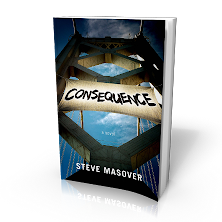I read the novel for the first time this month. The book is clumsily written by the standards of this day and age: the passive voice had me cringing every third page or so, and the oddly-abstracted omniscient narrator didn't put much of a brake on abrupt mid-scene switches from one character's point-of-view to another's.
The plot? Well, stated baldly, the plot was "children grow up." As Anna Quindlen has it in her forward to the Harper Perennial edition (2001):
As much as any other beloved book in the canon, A Tree Grows in Brooklyn illustrates the limits of plot description. In its nearly five hundred pages, nothing much happens. Of course that's not really accurate: Everything that can happen in life happens, from birth and death to marriage and bigamy. But those things happen in the slow, sure, meandering way that they happen in the slow, sure, meandering river of real existence, not as the clanking "and then" that lends itself easily to event synopsis. [...] A Tree Grows in Brooklyn is not the sort of book that can be reduced to its plot line. [...].All that said, you'd have to be something of a beast not to fall for Smith's protagonist.
Francie Nolan is toughened by her family's hardscrabble life, but a proudly controlled exterior learned from her clear-eyed mother conceals a little girl as tender as any other in pre-war Brooklyn (that'd be WWI, the war to end all wars). The writing's on the wall early on that Francie's gentle but haplessly alcoholic father isn't long for the world; and that a kind, honorable, decently-salaried neighborhood cop -- who is himself caring for a sickly wife -- will step up to marry Francie's mother when the time comes for each of their lives to enter a new chapter. But the foreshadowing doesn't diminish Smith's story. Francie is so real, so sharply observant, so simply loyal to her family -- and the Nolans live so close to the corner of homeless and hungry -- that a reader can't help but be drawn into the uncertainty of Francie's fate as she herself experiences it in the tumultuous now of an impoverished childhood.
Colm Tóibín's Brooklyn, which unfolds in the years immediately following WWII, has a little more plot to it. Poverty in rural Ireland leads a passive young woman to emigrate to the U.S., but only because her sharper-witted older sister insists it's the thing to do. Eilis Lacey bucks a convention or three, refusing to buy into the gossipy small-mindedness of her fellow boarding house residents, but throughout the novel she just ... falls into the events of her life. Eilis's destiny is what chance and other people plot for her. Tóibín's protagonist is no Francie Nolan. Even the novel's climax turns on the power of long-distance gossip to force a decision Eilis seems powerless to make for herself.
From NY Times review, The Reluctant Emigrant, by Liesl Schillinger (1 May 2009):
But the Lacey women cannot speak plainly to one another. "They could do everything," Toibin writes, "except say out loud what it was they were thinking." And so, too young to understand the consequences of her reticence, too obedient to bolt at the dock, too humble to imagine that her own life is her own business, Eilis boards the liner for America, an irrevocable step that her mother, her sister and Eilis herself might never have wished her to make had they thought it through. America is peopled, for the most part, by the descendants of immigrants who had the resolve, the daring and the detachment to leave behind the places and people they had formerly known. But Eilis isn't such a person; detachment isn't part of her makeup. It has been thrust on her by women who are as attached to home and family as she is. What were they thinking? They wouldn't, or couldn't, say.Tóibín writes with a clarity that causes the author to all but disappear from his story. You might like that, you might not, but you can't really doubt that this writer is in control of his language. More so by leagues than Betty Smith, even accounting for the decades that separate publication of these novels. Yet for me, clarity and control weren't enough. Eilis Lacey's story left me cold, even before I had Francie Nolan's portrayal for comparison.
A Tree Grows in Brooklyn is burdened by Betty Smith's flacid prose, by sentimentality, by an editor whose red ink seems to have run out part way into the job ... but in the end it doesn't matter much because readers have, for decades, longed to identify with Francie Nolan, whether she's shaming an arrogant doctor into treating her kid brother with humanity and respect; or facing down a simpering, saccharine English teacher who mistakes blindered convention for truth and beauty; or making the best of a heart callously broken by a selfish young man on his way off to war. Who wouldn't want to be this plucky, faulted, tenacious heroine?
Just this past Friday, an Op-Ed appeared in the NY Times by Daniel L. Squadron (a New York state senator who represent parts of Brooklyn and Manhattan), titled Can a tree Grow in the Bronx?. It's about taking care of the many city parks that aren't the "marquee jewels in the system."
Friday was the same day I finished reading A Tree Grows in Brooklyn, some 70 years after the novel's release.
Some books really stick. And they're not always the books that are pristine in their execution. Go figure.
Related posts on One Finger Typing:
The lives of books
Parallel lives in fiction: Murdoch, Barnes, the Man Booker prize
Old books, new insights
Heat wave in New York
I snapped the photo of Brooklyn across the East River, above, in 2011, on the hottest June 8th since 1933. I was standing (in the shade) where East River Park meets the Manhattan side of the Williamsburg Bridge. The image first appeared on this blog in the post Heat wave in New York.










